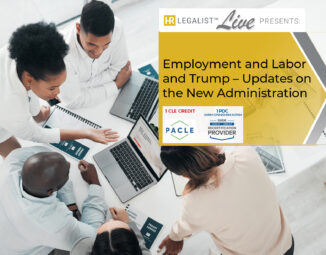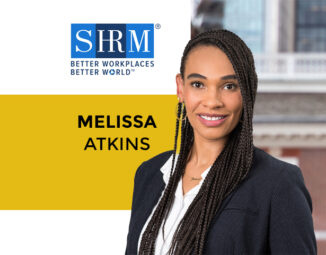The National Labor Relations Board’s Sept. 13 release of the draft joint employer rule was met with glee by employers across the country. While the proposed rule will reduce the opportunity for liability to be extended to a secondary business, employers operating in these circumstances must continue to contend with varying joint employer rules. An end zone dance is premature.
Joint employment is a concept that extends far beyond the National Labor Relations Act and the NLRB. Broadly, joint employers are two or more businesses that share control over a worker. The joint employer doctrine is used to determine whether two or more organizations can be held responsible for legal compliance and treatment of workers. The doctrine is relied on for determination of exposure in a number of forums. Franchisors, staffing agencies, professional employment organizations, or PEOs, and other similar business models involving multiple distinct legal entities are the most vulnerable to joint employer liability.
From the state and federal law to the U.S. Equal Employment Opportunity Commission, U.S. Department of Labor and the NLRB, each of these bodies and jurisdictions rely upon the doctrine to determine employer liability. However, most of these bodies have differing rules as to what establishes joint employment. The different rules leave employers navigating along a bumpy and ever-changing continuum to determine how to operate and thrive without running afoul of the varying standards.
NLRB Draft Rule
The draft rule released a few weeks ago would effectively return the standard for joint employment to the prevailing standard for over 30 years — the “Substantial Direct and Immediate Control Standard.” The new standard effectively overturns the standard set forth in the NLRB’s 2015 decision in Browning-Ferris Industries. The Browning-Ferris decision transformed the doctrine therein creating a lesser standard for establishing joint-employer status. Pursuant to the Browning-Ferris standard for joint employment, even an entity with indirect, unexercised control over a worker could be held liable for unfair employment practices. The new proposed rule requires that an entity must “possess and actually exercise substantial direct and immediate control over employees’ essential terms and conditions …” Indirect control will no longer be sufficient to establish the joint employer relationship.
While this is welcomed news for employers, minefields abound. First, the Browning-Ferris standard remains the prevailing standard through at least Nov. 13, 2018, when the comment period expires. However, even when the new rule takes effect, employers must consider their obligations with regard to this doctrine in a variety of other forums.
Department of Labor
Wage-and-hour litigation is one of the most, if not the most, punitive areas of the law for employers. Even an unknowing, unintentional technical violation of the law can result in a seven-figure award. The joint employer test under the Obama administration was expansive, taking into consideration numerous factors often resulting in multiple entities being considered employers and therefore liable for wage-and-hour liability as a result. Labor Secretary Alexander Acosta under the Trump administration rescinded the expansive definition in June 2017. There was however, no new standard implemented. As a result, there is no DOL joint employment test. This leaves employers subject to a circuit-by-circuit interpretation of joint employment for the purposes of the Fair Labor Standards Act.
Of the 11 circuits, eight of them have distinctly different tests. Only two circuits expressly share the same joint employer tests (the First and Fifth Circuits). The remaining two circuits do not have specifically recognized or utilized tests. The patchwork of tests that apply to employers across circuits only makes them vulnerable to varying standards that can result in very different outcomes. The fact that the rule application varies geographically is only further exacerbated in the joint employer context as often the putative employer is not operating within the same jurisdiction.
U.S. Equal Employment Opportunity Commission
The EEOC’s joint employer standard is best defined as flexible and focused on the degree of control an employer has over the terms and conditions of the subject employee’s work. The inquiry focuses on common law agency principles such as which entity hires, fires, assigns work, controls daily activities, furnishes equipment, determines where the work is performed, pays the worker, provides benefits, and how the worker is classified for tax purposes and whether the putative employer believes they are part of the employee-employer relationship.
The EEOC is adamant that they do not have a bright-line rule for joint employer determination. However, the flexibility of the test often results in inconsistent findings. There are a variety of contexts where this determination makes the difference between an organization being brought into an EEOC or other state regulatory investigation or not. The ramifications are significant, as the cost of litigation, potential exposure, time spent, reputation and the like are hanging in the balance.
Impact of the Varying Standards
The varying standards leave employers with a lack of certainty. The ramifications of these determinations impact not only franchisors and staffing companies but also contractors, subcontractors, private equity firms and others. Exposure for these entities, hang in the balance between the varying standards for each venue. Because the DOL/FLSA standard is based upon the jurisdiction in which the matter is brought in, employers need to be cognizant of the circuits that have a lower bar for establishing the joint employer relationship. Not only does the jurisdiction matter, the venue that the matter is brought in will also impact the standard. The determination as to whether a putative employer will be considered as an employer will be made based upon the venue in which the issue is raised. The outcome will differ whether the matter is brought before the NLRB, the EEOC or in court based upon the FLSA.
As a result, entities operating in multiple jurisdictions may not be able to use standard or uniform agreements. In order to avoid the risk of a joint employer finding, franchisors, staffing companies and the like should tailor their respective agreements in order to account for the varying standards based upon the jurisdiction and venue. There are strategies an entity can employ to emphasize the separation and distinctness. Contracts can be drafted to emphasize that the working conditions and other terms of employment are explicitly the province of one of the entities and can clarify that the same entity is the sole organization providing management, human resources, and pay and benefits to the workforce.
Beyond written agreements, employers who operate in connection with other entities need to train their workforce to act in concert with the intent of the agreements. Management from the potential putative employer entity must avoid taking control or directing the work of employees in the other organization. No amount of contract drafting can prevent the finding of joint employment if management directs the workforce of the other entity.
While employers eagerly await the NLRB reversal and promulgation of the new joint employer rule, they should take the time to consider the other joint employment standards they must contend with and how their agreements and interactions with other entities may leave them vulnerable to a joint employer finding. Employers should review their contracts and audit their actual practices as to interaction with third-party workforces in order to limit potential exposure in a variety of forums.
CLICK HERE FOR ARTICLE ON LAW360
The information contained in this publication should not be construed as legal advice, is not a substitute for legal counsel, and should not be relied on as such. For legal advice or answers to specific questions, please contact one of our attorneys.




